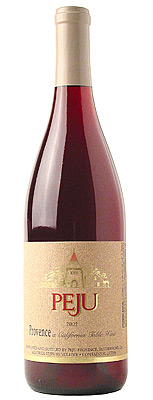 |
|
Wine Details
Price:
$22.00 per bottle
Description:
A proprietary red and white blend of Cabernet Sauvignon, Merlot and Zinfandel (30/16/8) with Chardonnay and French Colombard. This year’s blend consists of approximately 62% Estate red wines, barrel fermented Estate Chardonnay, along with French Colombard from Mendocino County.
|
|
|